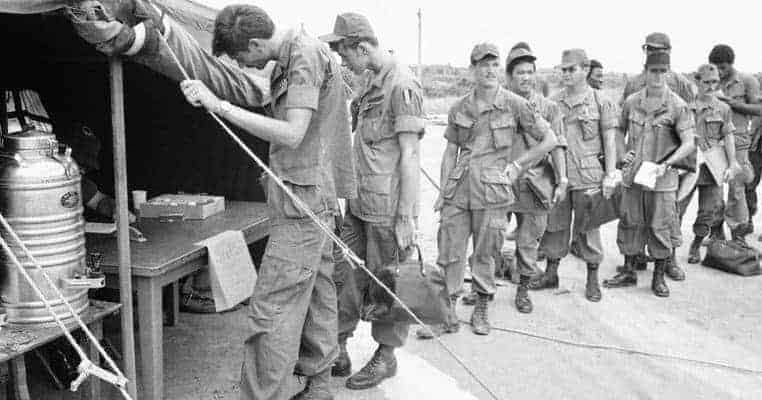War is hell, so warriors have often felt the need for some type of chemical assistance or encouragement to help them face the rigors of campaigning and the horrors of battle. The most common chemical aid used by most warriors was alcohol, and the resort to “liquid courage” has a track record going back thousands of years. Combatants have also used other drugs when available, whether of the smoking, eating, or snorting variety.
Following are 10 interesting things about soldiers’ use of intoxicants throughout history.
Warriors Have Used Intoxicants Since the Dawn of History
“Why do soldiers fight?” British military historian John Keegan answered that question by listing three factors: “inducement, coercion, and narcosis“. Inducement is about positive motivation. Pay, plunder, and the promise of revenge against a hated enemy. Coercion is about negative motivation: campaigning is tough and battles are scary, and understandably, most rational beings wish to avoid such hardships and hazards.
To counter that human instinct, armies often sought to convince their soldiers that their commanders were scarier than the enemy, via harsh punishments for shirking and cowardice. The idea was and remains to present the warriors with a straightforward proposition: if they fought, they might live, or they might die. If they did not fight, they would certainly die, because their commanders would execute them.

The positive and negative motivators of inducement and coercion could use a helping hand, however. Thus, the motivator of narcosis or chemical motivation. War is hard work, and even getting close enough to the enemy to fight it out often involved weeks or months of marching hither and yon. During that time the warriors had to withstand the elements, endure stints of thirst and hunger and other deprivations, plus cope with the hopelessness of knowing they could do little about it all.
Then, when the enemy was finally in sight, there came the doubts and fears. How will the battle go? Will the warrior live? Die? Get maimed for life? Will his favorite comrades live, or die, or get maimed? And how will he act in the moment of truth? Will he face the enemy bravely, and earn or retain the respect of his peers? Will he turn cowardly and let his comrades down?
Intoxicants, for all their long harmful effects, often helped warriors cope. Stimulants in particular kept soldiers alert, fought off fatigue, and allowed men to perform with little sleep. Drugs could also inspire courage and offer relief from the terrors of battle. The rituals of drinking and taking drugs also helped soldiers bond, thus creating trust and camaraderie at the squad level amongst those whose lives depended upon each other. And after battle, drugs helped warriors cope with the trauma of what they had experienced.
In short, most warriors throughout history had to deal with various levels of exhaustion, stress, and anxiety, when campaigning and fighting. In such circumstances, chemical aids were often seen as a blessing. Intoxicants were frequently taken unofficially, by warriors self-medicating to better endure the demands of war. But sometimes armies distributed intoxicants to their soldiers as official policy, to make war and combat feel more palatable.

